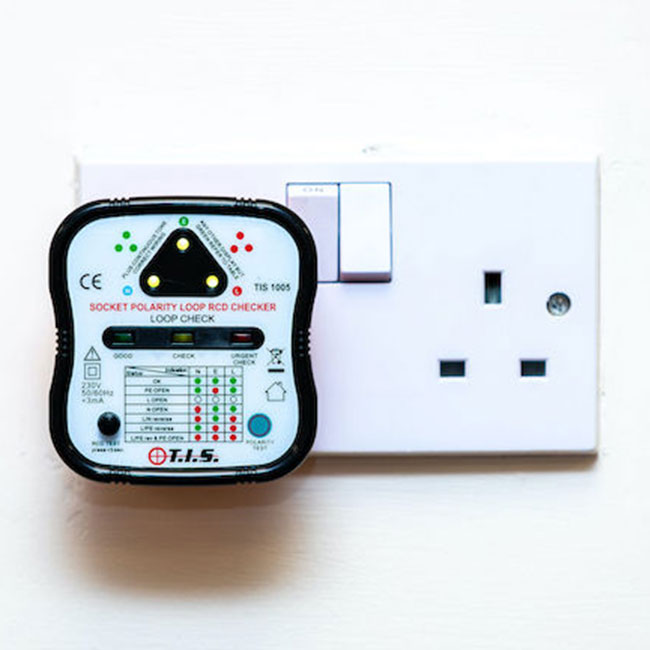Electrical sockets are obviously an integral element of any electrical system and a core feature in the infrastructure of domestic, commercial and industrial settings, whether they are fixed wall sockets or cabled extension sockets. Carrying out regular tests of these sockets – for installation and safety - is an essential part of a professional electrical testing regime.
What would you use to check an electrical socket?
Testing electrical sockets should form part of a scheduled testing programme and hence usually involves testing many different sockets around the home or workplace in one sequence of testing. For this reason it is best to use a socket tester. This is a simple, hand-held device which very quickly and simply tests that a socket is properly wired up and is operating safely.

How does a socket tester work?
A socket tester is plugged directly into the mains supply of the socket and usually has a line of LED indicators on the front face, which light up to signal the socket performance in terms of AC current and voltage, or the lack of. A microprocessor inside the tester analyses the continuity of current flow along with the polarity of the connections it comes into contact with.
The unit will indicate where faults exist in the socket installation, and typical wiring issues include neutral and earth wiring faults. A socket tester is used as a simple device and a first line of defence in terms of testing the safety and performance of a socket. However, it can’t detect more serious wiring faults, and hence you might need a multimeter for more advanced fault detection.
What is the process for checking an electrical socket?
Now let’s go through the process of how to use the TIS 1005 Socket and RCD tester. This is one of the best socket testers available on the market, and is a small and simple hand-held device which performs a test, checks the loop reading and also carries out a polarity test on any standard socket.
- Switch off the socket
- Remove any plugs or other devices from the socket
- Insert the TIS 1005 Socket and RCD tester into the socket
- Switch the power back on to the socket
Almost immediately you should see an audible socket test performed where the 3 x green LED lights on the face of the instrument light up to indicate the wiring is good. An automatic loop test is also done immediately and if the reading is between 0 – 1.9 Ohms, the reading is also good and the lights will indicate this.
- You can then press a button on the unit to carry out a polarity test and again the 3 x green lights should light up to indicate that the polarity is good.
- To carry out an RCD test you should hold down the bottom left-hand button for three seconds, this injects a fault to the circuit and trips the RCD. If the RCD doesn’t trip you will need to investigate why.
If there is some resistance in the socket when you plug the socket tester in to carry out the initial loop test, you will see a flashing green light in the centre of the 3 x LED lights, this means a check is required because the unit has picked up that it is measuring more than 1.9 Ohms. The check light will flash for any reading between 1.9-92 Ohms. If there is also a beeping sound, that means an ‘urgent’ check is required because the reading is over 92 Ohms and the tester has detected a fault which needs investigating.
Checking electrical socket video demonstration
You can also check our video demonstration below on our popular product the TIS 1005 Socket and RCD tester:
Please note that this section is for information purposes only. Anyone using equipment referred to in this section must be suitably qualified and/or experienced within the respective field. If in doubt before use, please consult a qualified electrician or engineer & thoroughly read all instruction booklets.